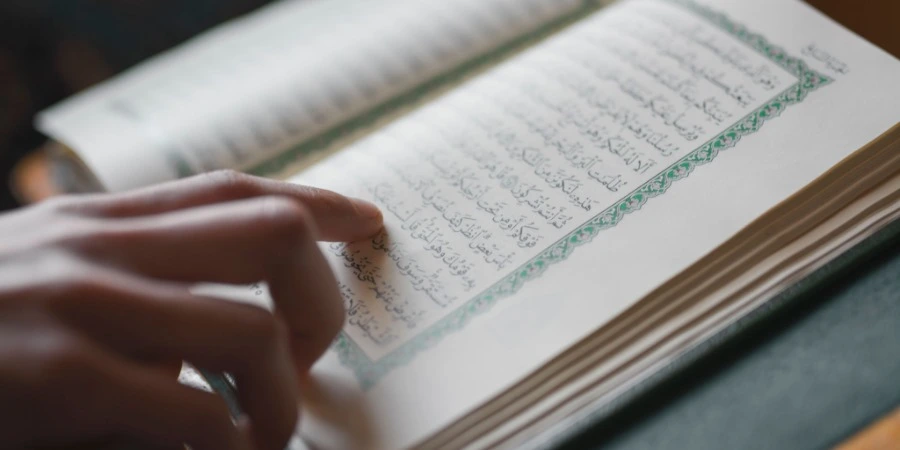Al‑Isra’ wal‑Mi’raj is the miraculous night journey and ascension of our Holy Prophet (P.B.U.H) in which something extraordinary happened. Something so extraordinary it changed an entire faith.
On this singular night, he travelled from the Sacred Mosque in Mecca to the Farthest Mosque in Jerusalem, and then ascended through the heavens in a way that offered comfort, purpose and hope. For Muslims, this journey is more than a story.
It marks the gift of the five daily prayers, it symbolises divine connection in times of hardship, and it invites every believer to reflect and renew. In the sections ahead you’ll explore the historical background, the details of Isra and Miraj ascension, its spiritual impact, and how Muslims today observe it.
The Hardship That Set the Stage for a Heavenly Gift
In Mecca. The Prophet Muhammad (PBUH) was going through some of his hardest days. After losing his beloved wife Khadijah bint Khuwaylid (RA) soon after his protective uncle Abu Talib. The year was called the “Year of Sorrow”. It had left him grieving and facing increasing opposition.
He and his companions endured ridicule, social exile and fear for their mission. Then, in that dark season, the Night Journey arrived as a message of mercy and affirmation. Scholars tell us this event occurred roughly mid‐mission, when the Prophet Muhammad (P.B.U.H) needed comfort and the Ummah needed a symbol of hope.
Whether you view it as fully physical, symbolic, or both, the background shows that it happened in a moment of intense trial.
A lesson that our Quranic class discussions highlight to remind students that divine ease follows hardship, just as revealed later in Surah Alam Nashrah.
The Journey of Al‑Isra’ (The Night Journey)
Al‑Isra’ marks the part of the journey where the Prophet Muhammad (PBUH) was transported from Masjid al‑Haram in Mecca to Masjid al‑Aqsa in Jerusalem or “the farthest mosque.” This wasn’t a casual trip.
It was miraculous. Islamic tradition states that the angel Jibrīl (Angel Gabriel) accompanied him, and that the Holy Prophet (P.B.U.H) mounted the celestial creature Buraq, that made an extraordinary distance in a single night.
At Masjid al‑Aqsa, He led prior prophets in prayer. A powerful symbol of continuity and unity. The journey emphasises that no distance, no despair, is too great when Divine power intervenes.
This theme is often recited and reflected upon in our Quran Memorization Course. And reminds students of Allah’s power to uplift hearts and transcend human limits.
Journey Through the Seven Heavens in Mi’raj (The Ascension)
The second half of the story is the Mi’raj. The Prophet’s (P.B.U.H) ascent from Masjid al‑Aqsa through the seven heavens. He met prophets like Hazrat Adam (A.S), Hazrat Jesus (A.S) , Hazrat Moses (A.S) , and Abraham (A.S) in each realm. And reached the extraordinary tree called Sidrat al‑Muntaha, and stood in the direct presence of Allah (SWT).
During this ascension the five daily prayers were established as an unbreakable bond between the believer and their Lord. This journey serves as spiritual symbolism. No matter how many floors of trials you climb, your connection with Allah remains.
It reassures believers that the seen world isn’t all that exists and that prayer anchors us in the unseen.
Lessons from Al‑Isra’ wal‑Mi’raj
One clear lesson: after hardship comes ease. Just as the Prophet’s (PBUH) journey followed the Year of Sorrow, so too for us. Allah brings us uplift when we feel overwhelmed.
Secondly: The institution of prayer as a pillar of Islam reminds us to anchor our lives in ritual and devotion. Not just when you’re strong. But especially when we’re weak.
Thirdly: The image of the Prophet (P.B.U.H) leading past prophets in prayer signals unity among messengers and invites Muslims to see themselves as connected across time and place.
Finally: The story invites hope, resilience and spiritual striving whatever our present trial.
Importance of the Miraculous Night in Islamic Faith
For Muslims, the Night Journey reinforces trust in the unseen and the vastness of Allah’s mercy. It encourages reflection on Masjid al‑Aqsa, on the plates of heaven, on human purpose.
Communities mark it through recitation, reflection and prayer, recognising that while the exact date may vary, the message is timeless. As one article notes, this miracle is “second only to the revelation of the Qur’an” in terms of significance.
How Muslims Observe Al‑Isra and Miraj
Many Muslims mark this night with increased devotion. Performing the Tahajjud (late‑night prayer), reciting Qur’an and offering extra Ducā (supplication) for forgiveness and strength. At mosques there may be sermons recounting the story, and families gather to reflect together.
In some communities charity and good deeds are emphasised as practical responses to spiritual lessons.
Importantly, scholars caution against rigid ritualisation of the date (for example, insisting on fasting on 27 Rajab as required) and instead emphasise the mindset: devotion, remembrance and renewal.
Reflect, Reconnect, and Rise.
The story of Isra and Miraj remains one of the most profound and moving events in the history of Islam. It’s a night journey and ascension for every believer who is going through storms, weariness or doubt.
It invites us to focus on prayer, keep up hope and reflect upon the unseen realities of faith. Whether you’re teaching teens, guiding your family, or simply renewing your own devotion.
May this story inspire you to stand in awe, to submit your heart in prayer and to move forward with confidence. Make this night not just an event in history but a turning point in your spiritual journey.If you need professional Ijazah verified tutors teach you Quran at the comfort of your home. Visit us at Quran Class today.




